
Eight Nutrition Tips For Women!
Here are eight nutrition tips. Follow them, and your stamina and performance should improve, plus you'll be getting the nutrients you need to fight the chronic diseases that are of increasing concern to women.
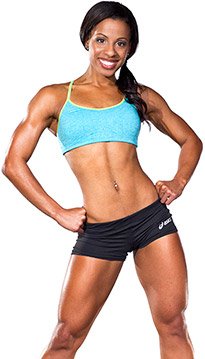
Have you ever thought to yourself, "I know my diet isn't perfect? Between family, work, and running around, I just feel tired a lot of the time. Maybe there's something missing in my diet that would give me the energy I used to have."
If you answered yes, or simply feel that you could use more energy to get you bursting through each day, please take the next few minutes to learn these eight nutrition tips to improve your stamina and performance.
Plus you'll be getting information on the nutrients you need to fight the chronic diseases that are of increasing concern to women.
Busy women often find themselves skipping meals, eating "empty" snacks, skimping on vitamins and overstuffing with fat-free foods. Women also have to realize that what works for men may not work for them. We have different nutritional requirements.
To help you meet those requirements, here are eight nutrition tips. Follow them, and your stamina and performance should improve, plus you'll be getting vital knowledge about the nutrients you'll need to fight some chronic diseases that are of increasing concern to women.
Eating Often
Most people don't eat often enough to get as lean and trim as they would like. Let's think of your metabolism as a burning fire. Ok, what is your metabolism? The term: resting metabolic rate (RMR) is the number of calories your body burns at rest to carry out typical body functions like breathing and pumping blood.
RMR makes up most of your metabolism—the total number of calories you burn in a day. Back to your fire, or metabolism; women that feed their bodies with 300 calories every three hours will be naturally boosting their metabolism and may improve their memory and cognitive skills later in the day.
On the other hand, skipping meals can leave you feeling drained, unable to concentrate and want to forfeit your evening workout. Long stretches between eating signal the body to slow the metabolism and store fat—it's the survival mechanism left over from our heritage as hunter-gatherers.
When we skip meals earlier in the day we may want to overeat at night. When night time falls you'll be more likely to choose foods that are high in fat, sugar and calories; leading to feelings of guilt.
Snacks
Best to eat around five times a day—that's three meals and two snacks. Always plan ahead if you have a busy schedule. Store some snacks that you know are healthy in your workbag. Some suggestions include:
- Almonds
- Apples
- Dried fruit
- Energy bars
- Protein bars
- Meal replacement or protein shake (with your shaker cup)
- Canned vegetable juice
- Small boxes of ready-to-eat breakfast cereal
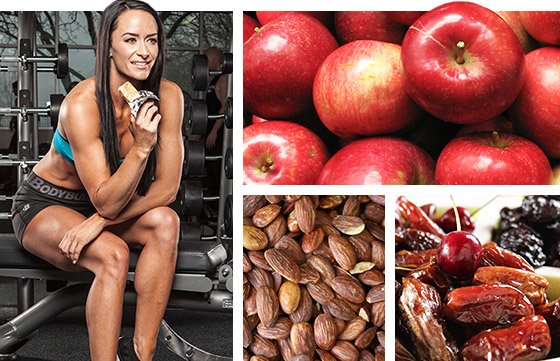
These are all good choices that are high in carbohydrates, fiber, vitamins and minerals. Get yourself a cooler and enjoy cottage cheese or yogurt as your mini meal.
Boosting Your B2
Vitamin B2, or riboflavin, assists in the breakdown of carbohydrates and fats for energy for working muscles. It is obvious then that this vitamin plays a crucial role during endurance exercise. Research on women shows that 30 minutes of daily exercise lowers riboflavin levels in the body.
What does this mean for you? As a women that exercises you should try to get at least the RDA (1.3 milligrams for women). Talking with your doctor about whether or not you need more than the RDA is best, especially if you enjoy endurance training.
sources of riboflavin
- 1 percent or skim milk
- Nonfat yogurt or other low-fat dairy foods
- Breads, cereals and other grain products are also good sources.
Bone Up On Calcium
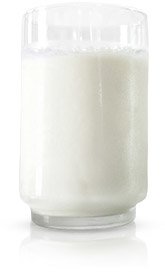
"Drink your milk; it will help you build strong bones." This sentence we have all heard over the years through our schools, the media and in our homes. Getting enough calcium and protein is particularly crucial for women, who are susceptible to osteoporosis.
Activities such as running and weight training help build stronger bones, however if you are amenorrheic (missed menstrual periods), you can lose bone mass despite regular exercise.
Reason: Amenorrheic women have lower levels of estrogen, a hormone that plays a key role in building and maintaining bone calcium.
An estimated 25 percent of women runners become amenorrheic at some point often due to their low body weight and low levels of body fat. Some are helped only by estrogen-replacement therapy. In other cases, changes in their diet work well - especially if they've been eating not enough calcium and protein.
For amenorrheic athletes, the calcium RDA of 800 milligrams for women over the age of 24 is insufficient. Around 1,200 milligrams, the equivalent of four servings of milk, looks to be more appropriate. As for protein, women vegetarians should know that a low intake may put them at higher risk for amenorrhea.
Always be sure you get regular servings of dairy products, calcium-rich tofu and greens, and calcium-fortified orange juice. Also, eat lean meat and/or high-quality protein combinations such as pinto beans and rice. Avoid fiber supplements as these bind calcium and other minerals in the intestinal tract. When this happens the absorption of essential nutrients decreases.
Vegetarians, Getting Your Vitamins
Women who are vegetarian have thought that not consuming meat products is a great way to reduce their fat intake, boost their carbohydrates and improve their overall health. Are they right in this way of thinking?
Research is showing us that vegetarians are generally healthier than meat-eaters, that they have a lower incidence of cancer and heart disease and that they have leaner bodies.
We need to be in the know. Being a vegetarian doesn't guarantee improved health. When the health of vegetarian women is compared to non-vegetarians, they took in less:
- Calcium: Essential to the formation and maintenance of strong bones and teeth.
- Zinc: Even a minimal deficiency of zinc impairs thinking and memory. Important for a strong immune system.
- Vitamin B12: a vitamin crucial for healthy red blood cells and nerve fibers.
Those in the study ate less than half the RDA for B12. Since B12 is found only in animal products (red meat, fish, shellfish, eggs and milk are good sources) strict vegetarians (or "vegans") must look for foods, such as soy milk, that are fortified with this vitamin.
Zinc is found almost exclusively in meat (oysters are an especially rich source). An exception is whole grains, but stay away from grains that are refined as they lose their zinc content. Wheat germ is one of the best zinc sources. You can easily add a tablespoon or two to hot cereals, casseroles, soups or blender drinks.
Go Green
Folate, another gem in the B vitamin family, is waiting for you in green, leafy vegetables such as broccoli, kale and certain dark-green lettuces. Most women don't get enough of this vitamin, and the deficiency is linked to severe neural-tube defects in newborns.
This connection is so strong that the Centers for Disease Control and Prevention (CDC) and the U.S. Food and Drug Administration (FDA) now recommend that women take in 400 micrograms of folate daily, which is more than twice the current RDA.
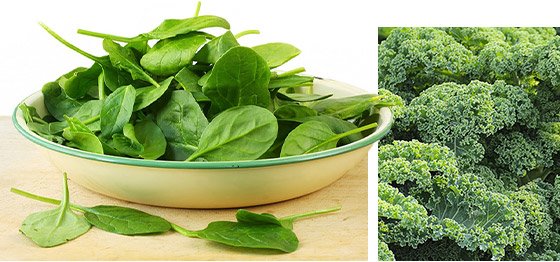
Recently there has been talk by the FDA of fortifying grains with folate (as is already done with the B vitamins thiamine, riboflavin and niacin). Adding folate to breads and pastas would boost your folate intake by an estimated 30 to 70 percent.
As we wait for this to take place, try to eat good sources of folate daily. Sources of folate include: leafy greens, citrus fruits. A 6-ounce glass of orange juice contains 120 micrograms of folate. Folate can be lost from foods during preparation, cooking, or storage.
To Retain Folate:
- Serve fruits and vegetables raw whenever possible.
- Steam, boil, or simmer vegetables in a minimal amount of water.
- Store vegetables in the refrigerator.
Add Soybeans To Your Routine
People who eat regular servings of soybean products (such as tofu and miso) are at a lower risk of heart disease. One of every two women will die of cardiovascular disease.
And although we women are, on average, a decade older than men when the disease first strikes, it kills as many women as it does men (ten times more women die of heart disease than die of breast cancer each year).
Native to East Asia, soybeans have been a major source of protein for people in Asia for more than 5,000 years. Soybeans are high in protein (more than any other legume) and fiber, low in carbohydrates and are nutrient-dense. Soybeans contain substances called phytoestrogens, which can significantly lower your "bad" LDL cholesterol and raise your "good" HDL cholesterol.
Add soybeans to soups and casseroles as you would other dried beans. Tofu works well in salads, pasta dishes, sandwiches and even shakes. And though soybeans are somewhat higher in fat than other beans, that fat is primarily the cholesterol-lowering monounsaturated and polyunsaturated types.
Iron Women
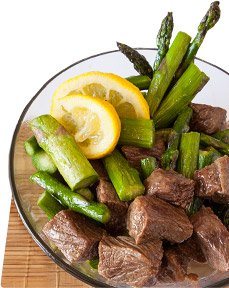
Did you know that 50 percent of all women runners are deficient in iron? Iron is necessary for production of hemoglobin in your red blood cells. Low iron levels result in fatigue and poor endurance, since the blood is unable to carry oxygen as efficiently to working muscles. Another sign that your iron levels are low: feeling chilled or cold.
Though losses of this important mineral occur during menstruation and in a few other small ways, lack of iron in the diet is the most likely cause of deficiency, as studies show that women distance runners usually get less than the RDA of 15 milligrams.
The solution is simple: eat more iron-rich foods. The two best choices are lean red meat and dark poultry, because the form of iron they contain is easy to absorb. Women often say no thank you to red meat due to its fat content, but by choosing lean cuts you can get your iron while still maintaining a low-fat diet.
Two good non-meat sources are lentils and iron-fortified breakfast cereals (see table, below). Also note that the tannins that are in coffee and tea block iron uptake from food, so drink these beverages between meals, not with them.
Checking in with your doctor is best, before turning to supplementation as your source of iron. Too much iron also has its risks. Too large of amounts can limit the absorption of zinc and may also cause constipation. You can increase your iron intake with 2 to 4 ounces of lean meat a day.
Good Sources of Foods Rich in Dietary Iron |
|
| Grains Rich in Iron | Iron (mg) |
| Brown rice, 1 cup cooked | 0.8 |
| Whole wheat bread, 1 slice | 0.9 |
| Wheat germ, 2 tablespoons | 1.1 |
| Oatmeal, 1 cup cooked | 1.6 |
| Total cereal, 1 ounce | 18.0 |
| Cream of Wheat, 1 cup | 10.0 |
| Pita, whole wheat, 1 slice/piece, 6 1/2 inch | 1.9 |
| Spaghetti, enriched, 1 cup, cooked | 2.0 |
| Raisin bran cereal, 1 cup | 6.3 |
| Iron Rich Legumes, Seeds, and Soy | Iron (mg) |
| Sunflower seeds, 1 ounce | 1.4 |
| Soy milk, 1 cup | 1.4 |
| Kidney beans, 1/2 cup canned | 1.6 |
| Chickpeas, 1/2 cup, canned | 1.6 |
| Tofu, firm, 1/2 cup | 1.8 |
| Soy burger, 1 average | 1.8 to 3.9* |
| Vegetables Rich in Iron | Iron (mg) |
| Broccoli, 1/2 cup, boiled | 0.7 |
| Green beans, 1/2 cup, boiled | 0.8 |
| Lima beans, baby, frozen, 1/2 cup, boiled | 1.8 |
| Beets, 1 cup | 1.8 |
| Peas, 1/2 cup frozen, boiled | 1.3 |
| Potato, fresh baked, cooked w/skin on | 4.0 |
| Vegetables, green leafy, 1/2 cup | 2.0 |
| Watermelon, 6 inch x 1/2 inch slice | 3.0 |
| Sample List of Foods Rich in Iron | Iron (mg) |
| Blackstrap Molasses, one tablespoon | 3.0 |
| Dates or Prunes, 1/2 cup | 2.4 |
| Beef, Pork, Lamb, three ounces | 2.3 to 3.0 |
| Liver (beef, chicken), three ounces | 8.0 to 25.0 |
| Clams, Oysters 3/4 cup | 3.0 |
| Dark meat Turkey 3/4 cup | 2.6 |
| Pizza, cheese or pepperoni, 1/2 of 10 inch pie | 4.5 to 5.5 |
* Varies with brand. Check the iron content on the label. ** Pregnant women should not eat liver because of its very high Vitamin A content. Large amounts of Vitamin A can be harmful to the baby.
Count Calories When Cutting Fat
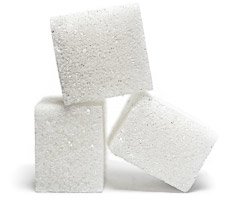
Sure, there are countless varieties of fat-free and reduced-fat products - but this fat-free frenzy has a downside. Too many people think that if a food is fat-free they have a license to eat as much of it as they want. Not true.
Remember that "fat-free" does not equal "calorie-free". Fat-free foods are usually loaded with sugar and calories, so gorging on them will cause weight gain.
Fat-free yummys may also starve you of important vitamins and minerals, since many fat-free products are refined which means that they're low in key nutrients. Many are also lower in fat-soluble nutrients such as vitamin E, an antioxidant that protects against age-related diseases.
Research shows that women who switch to a low-fat diet (less than 30 percent fat calories) often fall below their requirement for vitamin E.
To beat the fat-free nutrition blues and retain your youth, make sure you're getting several servings of fresh fruits and vegetables a day. To get your vitamin E, eat plenty of whole grains, and try to use small amounts of vitamin E-rich oils, such as flax or Udo's oil on foods after they are cooked and on salads.
If you are buying fat-free foods check food labels for calorie amounts. It's the number of calories consumed (taken in) verses the number of calories burned (out) that will result in a healthy body weight and appearance. Simply put: for weight loss, you need to take in fewer calories than you burn.
References
- Liz Applegate, Ph.D., is the Nutrition Editor for Runner's World. She is a member of The National Triathlon Training Camp Elite Team, and teaches at the University of California at Davis.
Recommended For You
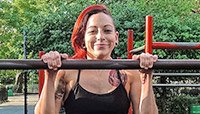
Ladies: Bring Pull-ups To The Forefront Of Your Training!
Many women crank away at pull-downs and assistance tricks for years and never see it translate into strict pull-ups. Achieve your big breakthrough with this fool-proof bodyweight progression!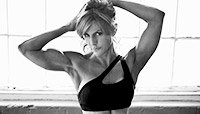
Fitness, Family, And Faith
Having trouble sticking to your New Year's resolution? Here are 16 reasons to reignite your motivation.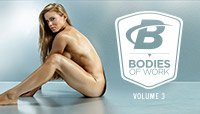
The Pictorial You’ve Been Waiting For
Our third edition of the Bodies of Work gallery is every bit as beautiful, inspiring, and uplifting as the two before it. Scroll through these 43 incredible photos and prepare to be amazed!
